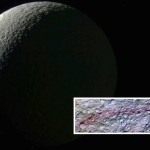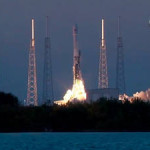Apollo 17 Rocket Moon Impact Site Finally Found
Lunar Mystery Solved after 43 Years

NASA’s Lunar Reconnaissance Orbiter (LRO) has spotted the exact spot on the moon’s surface where the Apollo 17 rocket booster hit.
The impact crater, which is about 130 feet (40 meters) wide, lies on the moon’s Mare Insularum, about 160 miles (260 kilometers) southwest of Copernicus Crater, one of the most famous and prominent features on the lunar near side, said team members with LRO’s Lunar Reconnaissance Orbiter Camera (LROC). (See Video Below)
Apollo 17 was the final mission of NASA’s Apollo program, the enterprise that landed the first humans on the Moon. Launched at 12:33 am Eastern Standard Time (EST) on December 7, 1972, with a crew made up of Commander Eugene Cernan, Command Module Pilot Ronald Evans, and Lunar Module Pilot Harrison Schmitt, it was the last use of Apollo hardware for its original purpose; after Apollo 17, extra Apollo spacecraft were used in the Skylab and Apollo–Soyuz programs.
Apollo 17 was the first night launch of a U.S. human spaceflight and the final manned launch of a Saturn V rocket. It was a “J-type mission” which included three days on the lunar surface, extended scientific capability, and the third Lunar Roving Vehicle (LRV).
While Evans remained in lunar orbit in the Command/Service Module (CSM), Cernan and Schmitt spent just over three days on the moon in the Taurus–Littrow valley and completed three moonwalks, taking lunar samples and deploying scientific instruments. Evans took scientific measurements and photographs from orbit using a Scientific Instruments Module mounted in the Service Module.







